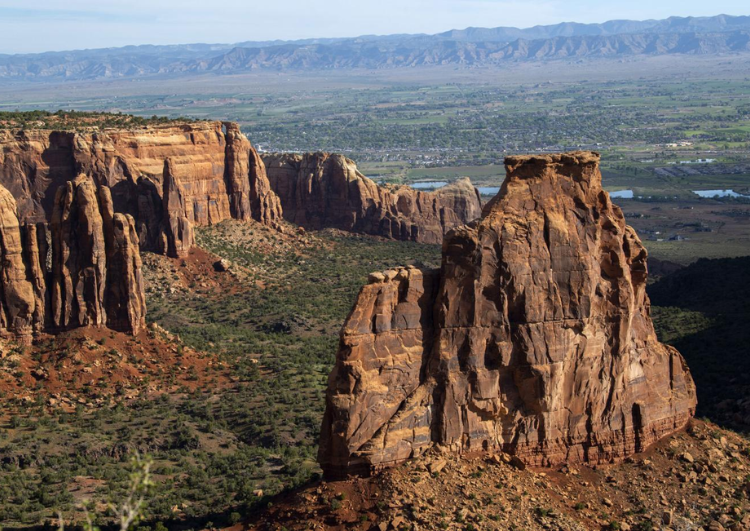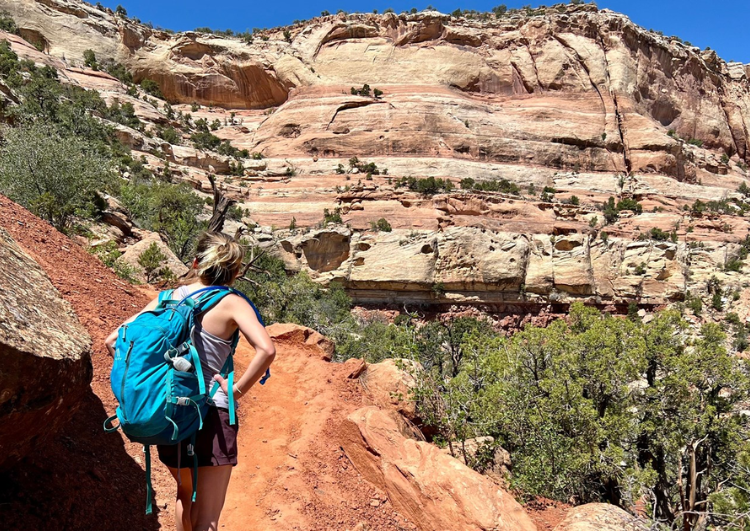
Colorado National Monument is located in western Colorado, near the city of Grand Junction. It's situated in the Colorado Plateau region and encompasses colorful canyons, towering monoliths, and stunning rock formations.

Colorado National Monument was established in 1911 by President William Howard Taft through a presidential proclamation. So, it officially appeared in 1911.


Colorado National Monument wasn't "invented" by a single person; rather, it was established through the efforts of various individuals and organizations advocating for its preservation. The idea of protecting the scenic and geologically significant area gained traction in the late 19th and early 20th centuries, leading to its designation as a national monument by President Taft in 1911.

Colorado National Monument is named for its location in the state of Colorado and its status as a national monument. The term "monument" in this context refers to a protected area of significant natural, cultural, or historical importance, designated by the government for preservation and public enjoyment. So, the name "Colorado National Monument" simply reflects its geographical location within Colorado and its status as a nationally recognized protected area.




Colorado National Monument offers a plethora of hiking opportunities that appeal to lovers of the outdoors for several reasons:
1. Diverse Terrain: The monument features a variety of landscapes, including towering sandstone monoliths, deep canyons, desert flora, and panoramic vistas. This diversity provides hikers with a range of experiences and challenges.
2. Scenic Trails: The trails in Colorado National Monument offer stunning views of the surrounding red rock formations, canyons, and valleys. Hiking through this breathtaking scenery enhances the overall experience for outdoor enthusiasts.
3. Accessibility: The monument offers trails ranging from easy strolls to challenging hikes, making it accessible to hikers of all skill levels. Whether you're a beginner looking for a leisurely walk or an experienced hiker seeking a more strenuous adventure, there's something for everyone.
4. Wildlife Viewing: Hikers in Colorado National Monument have the opportunity to encounter a variety of wildlife, including desert bighorn sheep, mule deer, and various bird species. Observing these animals in their natural habitat adds an extra layer of excitement to hiking outings.
5. Solitude and Serenity: Despite its popularity, Colorado National Monument offers numerous trails where hikers can find solitude and tranquility amidst the stunning natural surroundings. The sense of peace and connection with nature enhances the overall hiking experience.
6. Seasonal Variation: The monument's trails showcase seasonal changes, with wildflowers blooming in the spring, vibrant foliage in the fall, and cooler temperatures making hiking more comfortable in the winter months. This seasonal variation adds to the appeal for hiking enthusiasts looking to explore the area throughout the year.
Overall, Colorado National Monument provides an unparalleled opportunity for hiking lovers to immerse themselves in the beauty of the natural world while enjoying a variety of trails suitable for every level of hiker.





Yes, Colorado National Monument offers hiking opportunities throughout the year, each season presenting its own unique experience:
1. **Spring**: Springtime in the monument brings mild temperatures and blooming wildflowers, making it an excellent time for hiking. The weather is usually pleasant, and the landscapes are adorned with vibrant colors.
2. **Summer**: While summer temperatures can be hot during the day, early mornings and evenings provide ideal conditions for hiking. Many trails offer shade from rock formations, and higher elevations may provide relief from the heat.
3. **Fall**: Fall brings cooler temperatures and changing foliage, creating a picturesque setting for hiking. The crisp air and colorful scenery make it a popular time to explore the trails in Colorado National Monument.
4. **Winter**: Winter hiking in Colorado National Monument can be rewarding, especially on milder days. While some trails may be snowy or icy, lower elevations often remain accessible for hiking. The stark beauty of the landscape against the snow can be particularly striking.
It's important for hikers to check weather conditions and trail status before embarking on any hike, especially during winter months when snow and ice may affect trail conditions. Additionally, hikers should come prepared with appropriate clothing, water, and supplies regardless of the season.